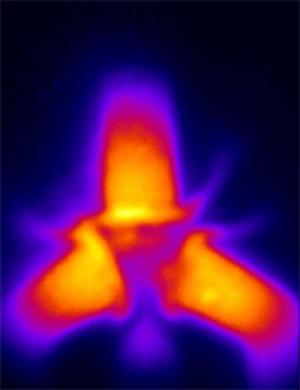UCSD Scientists Create Direct Electron to Photon Circuitry
Source: Dailytech
Quasiparticle based circuits could break down the electro-optical communication barrier.
One of the bottlenecks in current electro-optical communication systems is the need to convert electrons into photons. While optical interconnects maybe be amazingly fast and efficient, the conversion process still chews up precious time.
This May, Harvard researchers showed a new technology that could be used to build LEDs directly into an integrated circuit. Last week, University of California at San Diego scientists published work in the journal Science using a more direct approach at converting electricity to light on the fly.
Excitons are an interesting type of particle. They are created when photons enter a semiconductor, exciting the electrons it contains. An excited electron forms an electron-hole pair, which in this case, is called an exciton. What makes excitons useful for optical ICs is that when the electron-hole pair recombines, they emit a flash of light.
The key to creating an electro-optical IC in this case is the ability to control the exciton, preventing it from recombining too early. To accomplish this, the UCSD scientists used a special semiconductor made of gallium arsenide, very low temperatures (less than 40 degrees Kelvin), and a special type of exciton that separates the electron and hole pair by several nanometers, confining them to their own quantum wells.


Recent Comments